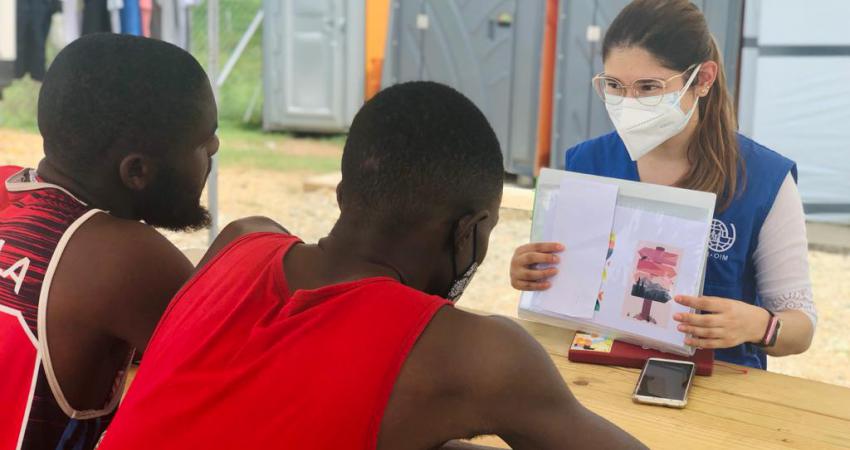IOM promotes crisis communication in emergency contexts that includes migrants

Any type of emergency that impacts a community generates communication gaps that can endanger people's lives and safety. In this context, making a poster to communicate a message may seem like a simple and effective solution. However, questions such as "Can all the affected population read? Is the language used ideal? Do they speak the same language or does it have to be translated?" Should be considered, particularly when the audience includes migrants.
Following the statement that "a message communicated in time can save a person's life", the International Organization for Migration (IOM) has developed the Practical Guide for Communicating in the Context of Migratory Crises. This seeks to strengthen the capacities of States and various actors to ensure the inclusion of migrants in emergency prevention, preparedness and response systems, while safeguarding their dignity and rights.
It is based primarily on two IOM operational frameworks, the Migration Crisis Operations Framework (MCOF), as well as the Migrants in Countries in Crisis Initiative's (MICIC) Guidelines, and other IOM resources. At the same time, it integrates theoretical concepts and practical tools from strategic communication and development communication that can be adapted to crisis contexts.
The Guide not only positions communication as a central element in emergency response, but also recognizes the active role that migrants must play if we want to build effective processes. In this sense, the aim is to provide people and institutions working in the field and with migrant populations with a quick reference resource that will enable them to deal with the crisis or emergency in the best way possible.
The document, divided into three sections, helps those who consult it to know how to identify the characteristics of migrants and consider them when creating messages, coordinate and integrate the partners involved in the dissemination of messages, identify the most appropriate channels, have tools to know when and how communication actions can be implemented, and identify and include spaces for validation, dialogue and listening with the migrants throughout the entire process.
The Guide has already been used in various activities such as the Regional Workshop on Communication in Emergencies and Migration Crises organized jointly with the Commission of Migration Authorities of the SICA member countries (OCAM), the Emergency Simulation Workshop organized jointly with the Emergency Operations Center (COE) of Guatemala, the Basic Course on Migration and Inclusion of Migrants in Emergency Response given in Honduras together with the Permanent Contingency Commission (COPECO), as well as the Workshop on Migration Management and Temporary Shelter Management given by IOM Panama in Darien to various partners that deal with extra-regional migratory flows.
"I found the Guide very useful because in the context it is very easy to forget the principles or how important it is to include migrants, so it is always valuable to reinforce terms, meanings and everything that involves working in the field. In terms of communication, I really hope that in the field we can apply what we have learned and build different types of resources for and together with migrants," said Katiuska Forbes, a technician with RETT International who attended the workshop held in Panama.
The Practical Guide for Communicating in the Context of Migratory Crises was developed within the framework of IOM's Regional Program on Migration, which is supported by the Bureau of Population, Refugees and Migration (PRM) of the U.S. Department of State.
